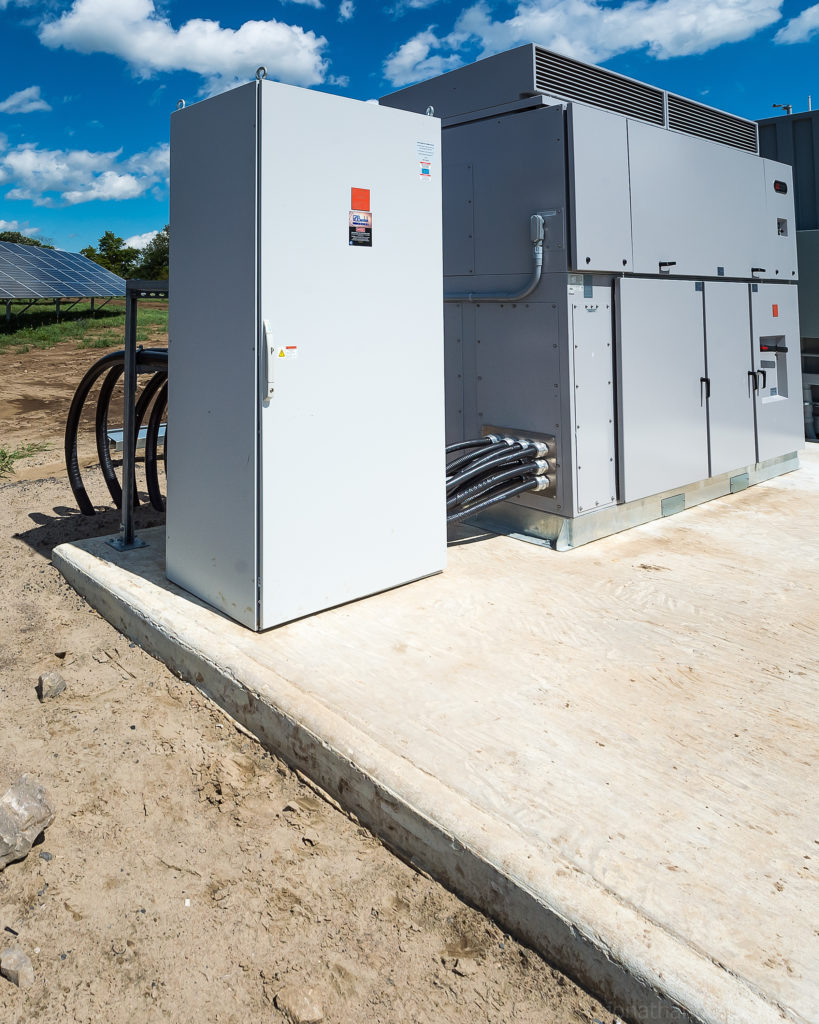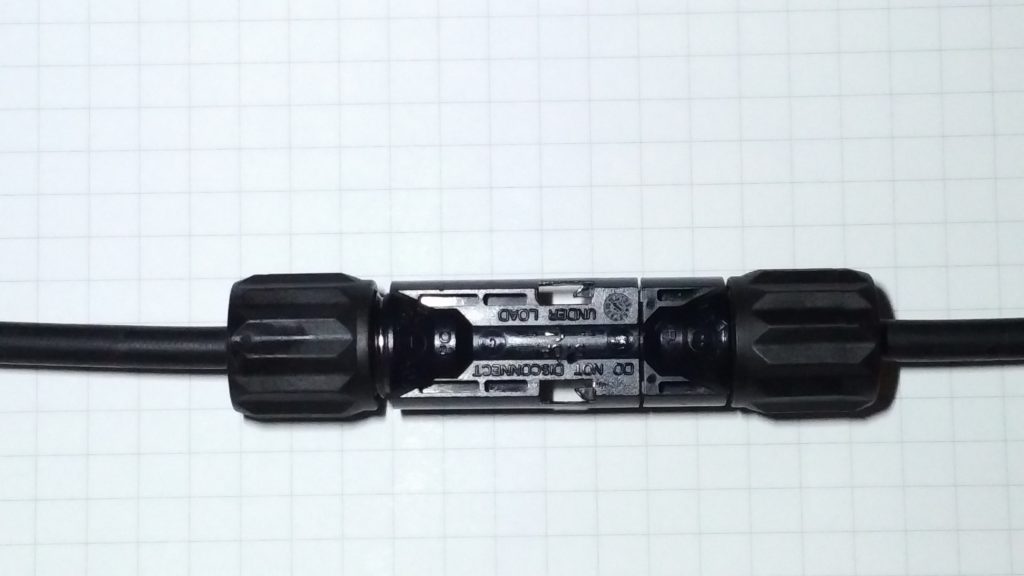This is the fifth in a series of five articles detailing significant changes approved by the Technical Committee for the 2018 Canadian Electrical Code Part I (CE Code). The final meeting for 2018 CE Code changes took place in June 2017. It should be noted that the 2018 CE Code was published by CSA Group on January 1, 2018, and that the information provided in this article is based solely on the consolidated memorandum of revisions to the CE Code, published by the CSA Group after the June meeting.
Section 64 — Renewable energy systems
The first significant rule change in Section 64 is found in Rule 64-002 Special terminology. The definition for a Hydrokinetic power system was revised removing the reference to a maximum rated output of 100 kW. The change was a direct result of the installation of the Open Hydro hydrokinetic power system detailed in the January/February issue of IAEI News Magazine.
The next definition change was to address changes to the standard for utility-interactive inverters. These inverters are now called interactive inverters. The revised definition reads: “Interactive inverter — an inverter whose AC output is intended for use in parallel with an electric utility or other electricity supply authority network, whether the inverter injects net power into the utility or supply network or not.” The word “utility” was removed, recognizing connections to other than just utilities. This definition change also prompted the removal of the word “utility” in Rules 64-104, 64-108, 64-112 and 64-814.
The next special terminology change was to add a definition for a photovoltaic recombiner. The new definition reads: “Photovoltaic recombiner — an assembly of buses and connections that may contain overcurrent protective devices, control apparatus, switches, or other equipment and that connects outputs from photovoltaic combiners together to create an output at higher current or higher voltage, or both.”
Rule 64-060 Disconnecting means. The first change to this rule was to expand Subrule (2) to include the specific disconnecting means requirements from Rule 84-024. The next significant change for this rule is in Subrule (12). Item (b) now includes the words “integral with the photovoltaic combiner or” to clarify that the photovoltaic combiner disconnecting means within 2 m from the photovoltaic combiner includes a disconnecting means that is integral with the photovoltaic combiner. The last change to Rule 64-060 is the addition of new Subrule (13) that provides detailed direction for the installation of photovoltaic recombiners.

Only photovoltaic recombiners that are installed farther than 7.5 m from an inverter are required to have a single disconnecting means installed in the circuit between the photovoltaic recombiner and the inverter. The referenced single disconnecting means is required to be integral with or within 2 m from the photovoltaic recombiner. In addition, where the photovoltaic recombiner incoming output circuit overcurrent protection is in the form of fusing, this single disconnecting means is required to be interlocked with the door of the photovoltaic recombiner.
Rule 64-066 Ungrounded renewable energy power systems. Subrule (1) has two changes; the first is in Item (a) that now recognizes permission to operate with ungrounded source and supply circuits where all source and supply circuit conductors shall have overcurrent protection except as permitted by Rule 64-214 (1). Subrule 64-214(1) does not require individual overcurrent protection devices where the sum of the available short-circuit current from all photovoltaic source circuits connected to the same power conditioning unit is not greater than the rated ampacity of the apparatus or conductors. The second change is the deletion of Item (b). This no longer limits the source and supply conductors of an ungrounded renewable energy power systems to be installed in metallic raceways or metal-sheathed (jacketed) multi-conductor cables.
Rule 64-110 Unbalanced interconnections. Subrule (2) has been deleted in recognition that the standards for interactive inverters do not have specific requirements for single-phase inverters used on a three-phase system. This means that single-phase inverters can be used on three-phase systems provided that “under normal operating conditions, the resulting three-phase system voltages are balanced within the limits of supply authority requirements.”

Rule 64-112 Interactive point of connection. Item (d) of Subrule (4) has an editorial change by adding the wording “in source circuits supplying power to a busbar or conductor” to align with existing wording in Item (c).
Rule 64-202 Voltage of solar photovoltaic systems. Subrule (5) has been expanded, allowing up to 1,500V dc photovoltaic source and output circuits including equipment connected to or within those circuits to be exempt from the visible isolation and interlock requirements in Rules 36-204, 36-208, and 36-214. This expansion also requires that: the installation is to be serviced only by qualified persons; portions of the installation exceeding 750V are inaccessible to the public; and that “DANGER” markings followed by the maximum rated photovoltaic circuit voltage of the equipment be applied to all enclosures with photovoltaic source and output circuits exceeding 750V dc. Keep in mind the marking need to include the specific voltage, not just danger high voltage.









Rule 64-214 Overcurrent protection for apparatus and conductors. Subrule (3) was deleted, and Subrule (4) was modified in recognition of nuisance operation of the overcurrent device when the individual photovoltaic source circuits are set at not greater than 100% of the rated short-circuit current of the source circuit.
Rule 64-216 Photovoltaic dc arc-fault circuit protection. Item (d)(ii) of Subrule (2) was modified to require the arc-fault protection to disable or disconnect the “photovoltaic dc source circuits or dc output circuits either within the combiner, at the module junction box, or at the module cable connectors.” Another option to disable or disconnect inverters or charge controllers still exists in Item (i).
Rule 64-218 Photovoltaic system rapid shutdown. This rule has been rewritten with the following modifications.
Subrule (1) requires photovoltaic systems installed on or in buildings to be provided with “photovoltaic system rapid shutdown” where the insulated conductors or cables of the photovoltaic source or output circuit are 1 m from the array.
Subrule (2) does not require a photovoltaic system rapid shutdown for circuits from a ground-mounted photovoltaic system that enter a building used solely to house photovoltaic system equipment.
Subrule (3) requires the photovoltaic system rapid shutdown device to limit the photovoltaic source and output circuits to not more than 30 V within 30 seconds of initiation of the rapid shutdown for all photovoltaic source and output circuits located more than 1m from the photovoltaic array.
Subrule (4) requires the rapid shutdown initiation device to be readily accessible and be located at the supply authority meter location for single dwelling units installations and for other than single dwelling units be located at the supply authority meter or at the consumer’s service equipment location. It also requires that another rapid shutdown initiation device be located within 9 m of the arrays or a permanent access to a building roof where array(s) are installed.
Subrule (5) mandates that the single line diagram required by Rule 84-030 must include the location of the rapid shutdown initiation devices.
Subrule (6) requires labelling located at the consumer’s service equipment and the supply authority meter location to indicate that the photovoltaic system is equipped with a photovoltaic system rapid shutdown device.
Rule 64-220 Attachment plugs and similar wiring devices. This rule has three new subrules and revisions to Subrule (1). Subrule has new requirements for attachment plugs and similar wiring devices used for interconnection of dc photovoltaic source and photovoltaic output circuits that include the attachment plugs and similar wiring devices to be a mated pair that are compatible with the type of cable used.
Subrule (3) requires attachment plugs and similar wiring devices to be marked “Do Not Disconnect Under Load” or ”Not for Interrupting Current” when of a type that requires the use of a tool to open, or to be of a type “rated for interrupting current without hazard to the operator.”
Subrule (4) allows single pole attachment plug or similar wiring device designed for dc use that complies with Subrules (1) through (3) to be only used as a dc isolation means.
Subrule (5) requires that a multi-pole attachment plug, or similar wiring device, that complies with the requirements of Items (1)(a), (b), (c), (e), (f) and (g) and Subrule (3) to be used as an ac isolation means.

Section 66 — Amusement parks, midways, carnivals, film and TV sets, TV remote broadcasting locations, and traveling shows. Section 66 does not have any significant changes for this code cycle.
Section 68 — Pools, tubs, and spas. The only significant change in Section 68 is in Rule 68-306 Receptacles for a cord-connected hydromassage bathtub. This rule has been rewritten to recognize changes to the product standard, which allows multiple cord-connected power supplies. As such, Subrule (1) now recognizes cord-connected hydromassage bathtubs with one or more power supply cords intended for connection to receptacles. In addition to the existing requirement for the receptacles to be inaccessible to the hydromassage bathtub occupant and located at not less than 300 mm from the floor, this subrule now mandates at least one dedicated branch circuit for the hydromassage bathtub receptacles.
Subrule (2) requires multiple receptacles (where used) to be located in close proximity.
Subrule (3) requires Class A ground fault circuit interrupter protection where the hydromassage bathtub is not provided with a Class A GFCI.
Subrule (4) mandates a warning label at each receptacle “warning against the connection of any equipment not associated with the hydromassage bathtub.”
Section 70 — Electrical requirements for factory-built relocatable structures and non-relocatable structures. Section 70 does not have any changes for this code cycle.
Section 72 — Mobile home and recreational vehicle parks. Section 72 does not have any changes for this code cycle.
Section 74 — Airport installations. Section 74 does not have any significant changes for this code cycle.
Section 76 — Temporary wiring. Section 76 does not have any changes for this code cycle.
Section 78 — Marinas, yacht clubs, marine wharves, structures, and fishing harbours. Chair Andrew Pottier did a fantastic job on the reorganization and changes to Section 78 staring with five new definitions for a Boat House, Docking Facility, Fixed Pier, Floating Pier, and Marine Wharf. The main reasons for these changes were to clarify existing rules including the scope, and the addition of requirements for dock facilities and boathouses. As part of the reorganization, the wording related to “marine structures” and “fishing harbours” was removed as the use of these terms caused confusion within Section 78 when applying the requirements in the 2015 CE Code.
The first significant installation change is the inclusion of dock facilities, and boathouses in the receptacle requirements. This means that 15 A and 20 A receptacles rated for 125 V are now required to be protected by a ground fault circuit interrupter of the Class A type now covered in Rule 78-050. The next significant change is for branch circuits and feeders in renumbered Rule 78-052. This rule requires each feeder for distribution equipment in or on fixed or floating piers, or docking facilities, be provided with ground fault protection with a setting sufficient to allow normal operation of the distribution equipment, but in no case greater than 30 mA.
Renumbered wiring methods Rule 78-056 has a new Item (e) for Subrule (1) that requires metal-sheathed cable exposed to the weather, or splashing of water, to have overall corrosion protection. A new Subrule (3) has also been added to require flexible cable used to compensate for tidal movement to be supported at both ends of the cable by means capable of gripping the cable, except where the end of the cable is securely fastened to a structure in which relative motion will not occur.
Section 80 — Cathodic protection. Section 80 does not have any changes for this code cycle.
Section 82 — Closed-loop and pre-closed-loop power distribution. Section 82 has been deleted from the code. The rationale for the deletion was that the closed-loop and pre-closed-loop power distribution did not proceed as expected when this section added to the 1990 edition of the CE Code. Since then very few installations were completed, and none have been installed for many years.
Section 84 — Interconnection of electric power production sources. Section 84 does not have any changes for this code cycle.
Section 86 — Electric vehicle charging systems. The only significant change in Section 86 to in Rule 86-300. Loading provisions that allow electric vehicle supply equipment to be supplied from a branch circuit supplying another load in Subrule (2) have been replaced with a reference to the two new subrules regarding loading controlled by an electric vehicle energy management system that have been added to the end of Rule 8-106.
Tables
The two tables with significant changes are: Tables 12A Allowable ampacities for portable insulated copper conductor power cables (amperes per insulated conductor), and Table 52 Tolerable touch and step voltages.
The significant change to Table 12A is the addition of new columns for single conductor and three conductor 35 kV shielded cables. The changes for Table 52 include revised tolerable touch and step voltages in accordance with IEEE 80 for a person having 50 kg body weight. In addition, the row for “dry soil” was removed and the row for “150 mm crushed stone” was replaced with “150 mm (3000 Ω · m),” and a new row was added for 100 mm (10 000 Ω · m) unbroken asphalt over moist soil.















Find Us on Socials